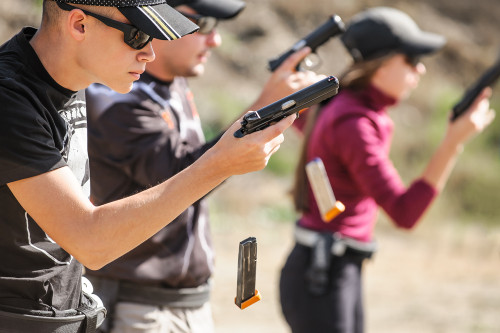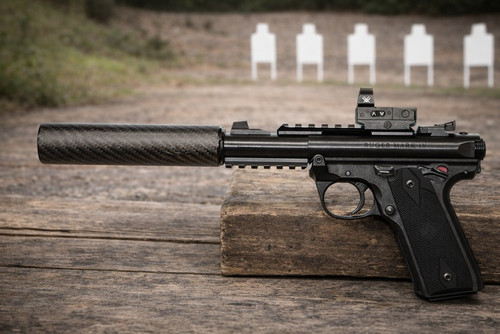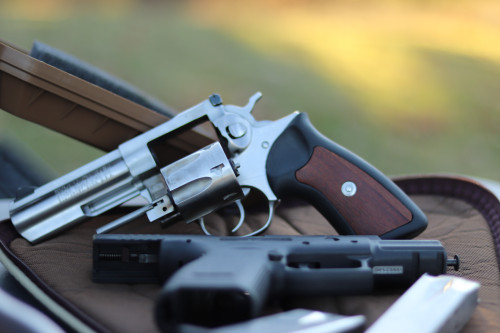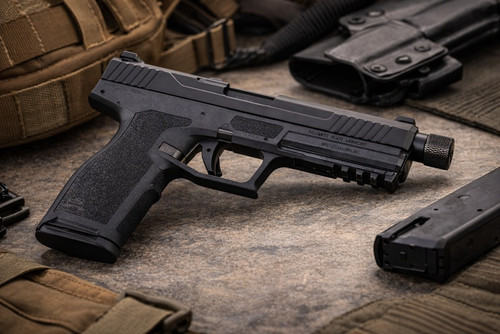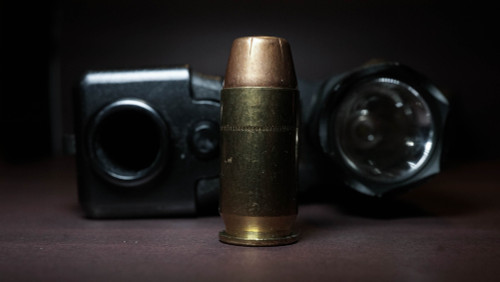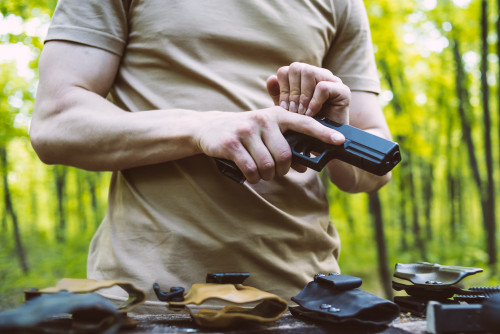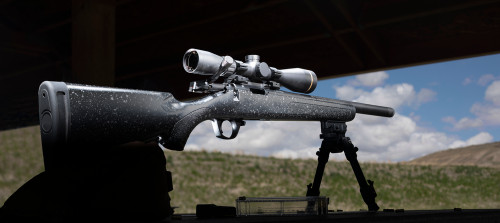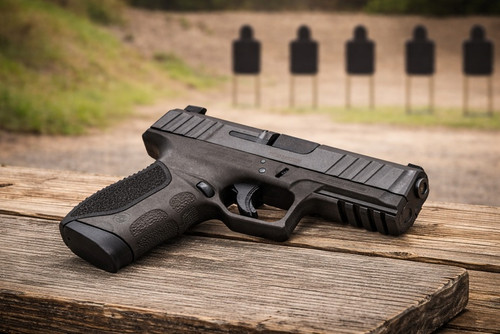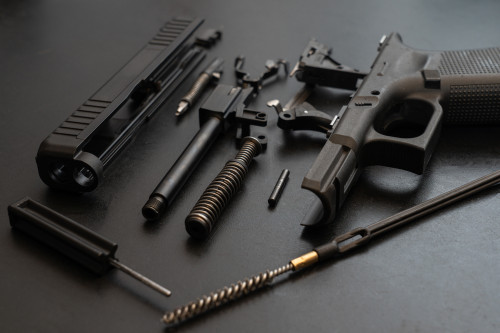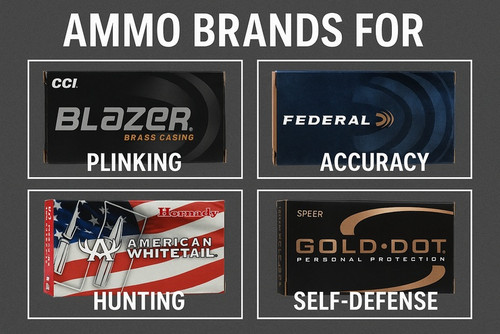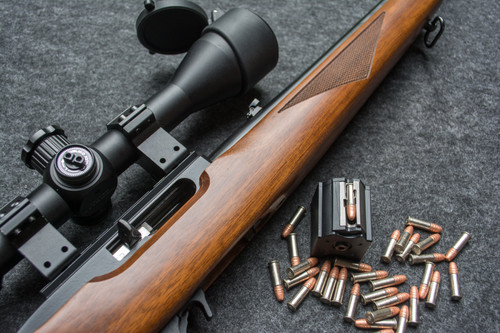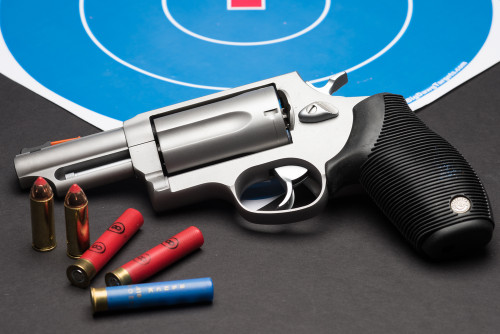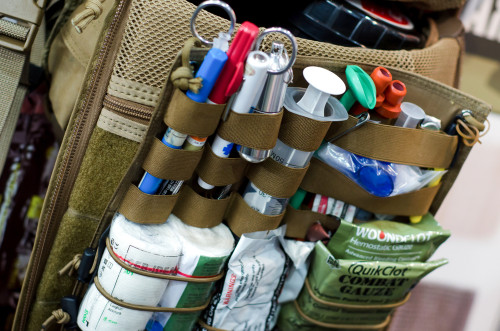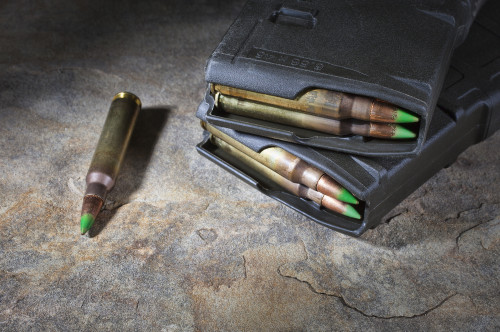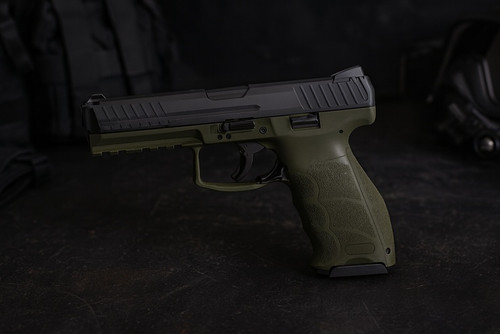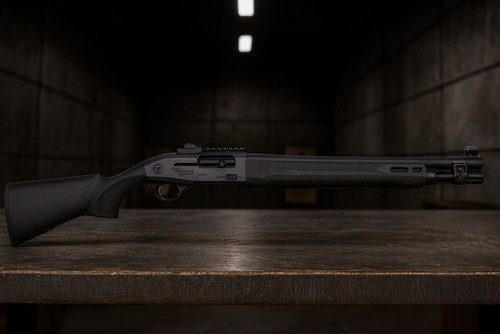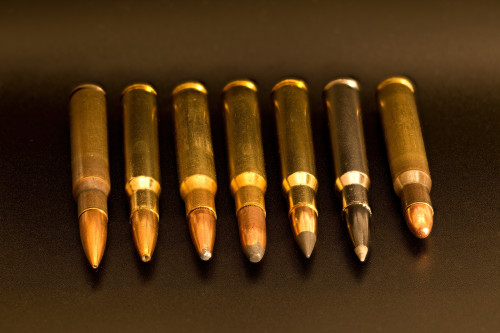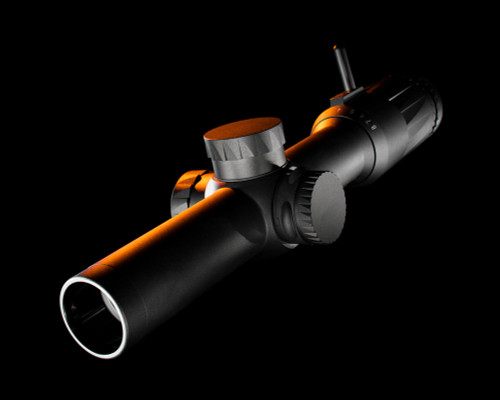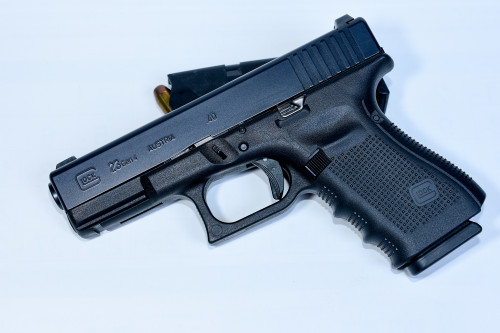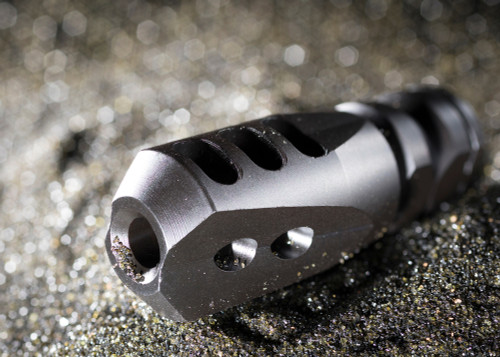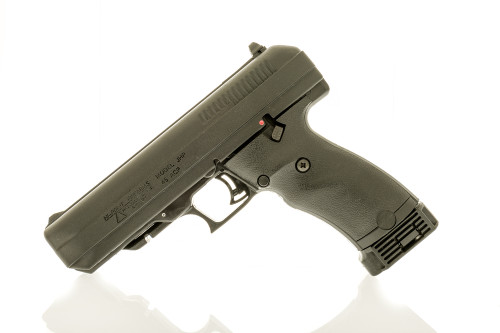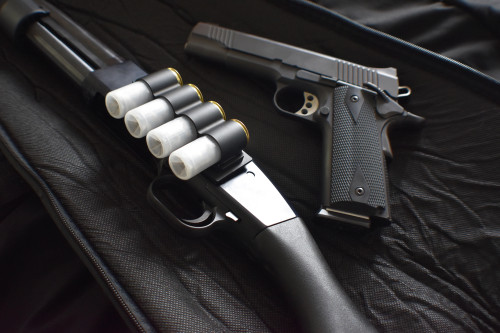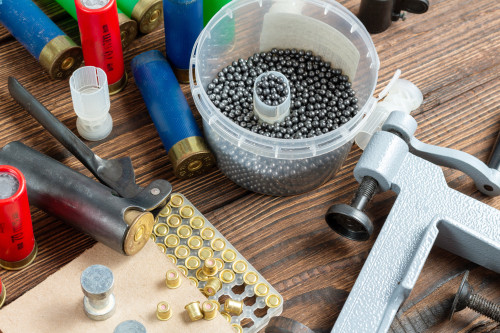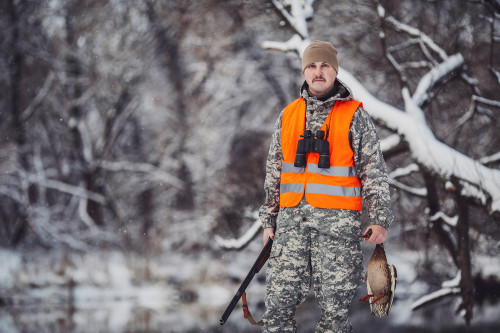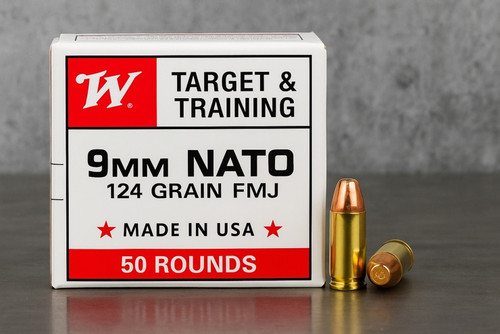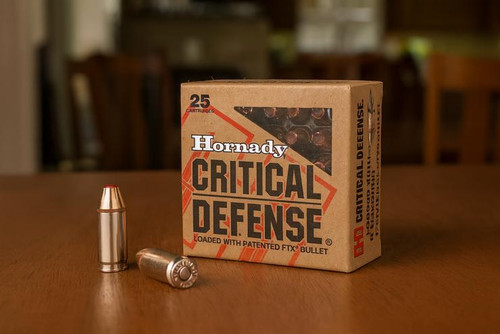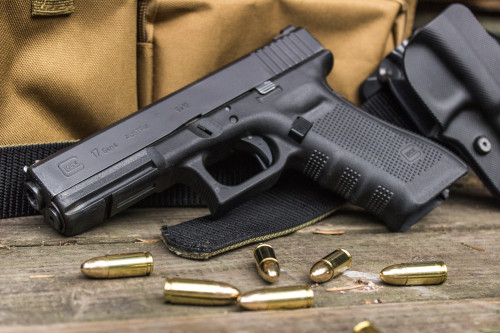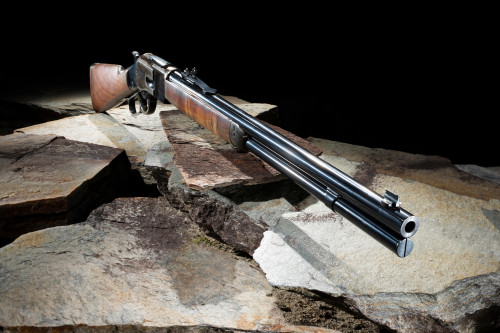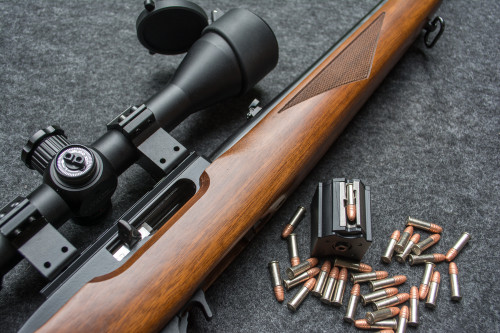All the “Gucci Gear” in the world won’t be worth anything if you don’t train with your firearm. That red dot might make it easier to acquire a sight picture, but it’s not a perfect solution. Part of being a responsibly armed citizen is making sure you’re not a liability when you pick up your handgun in public, on the range, and in your own home. One of the best ways to master a handgun is by implementing pistol shooting drills into your range routine.
Shooting drills help you hammer out bad habits and develop good ones, giving you the skills to react correctly under pressure. Whether you own handguns for self-defense, competitions, or you work in law enforcement, drills need to be a regular part of your training regimen.
Here we’ll cover some of our favorite drills you can easily implement at the range.
The Fundamentals of Pistol Shooting
Before you even begin shooting, you need to be familiar with the type of gun you’re shooting and how it works. For example, semi-auto pistols use expanding gas and springs to cycle rounds from a magazine, while revolvers rotate a single cylinder to feed a new cartridge every time you pull the trigger.
You’ll also need to understand the basic parts of your firearm. Pay attention to:
- Grip: Where you hold the gun, usually perpendicular to the barrel.
- Barrel: The cylinder that allows expanding gas to move bullets. In semi-auto guns, barrels live in the slide.
- Slide: Home to the barrel, moves back and forth when firing to help cycle spent rounds and load new ones. Rack the slide to load the chamber.
- Trigger: Press this to make the gun go boom.
Pistol Marksmanship Essentials
In spite of what movies and video games imply, shooting a pistol requires a lot more coordination than just pointing it in a direction and pulling the trigger. Accurately putting rounds on target requires:
- Shooting with one or two eyes open
- Proper sight picture
- Proper breathing
- Pressing through the trigger
- Ignoring the muzzle report
- Recoil management
Types of Pistol Ammo
Finally, you’ll want to consider which types of ammo you use when shooting. If you’re training, or competing, you’re generally going to use jacketed ammunition like FMJ. You might even opt for a cheaper ammo brand so you can afford to train as often as possible.
If you’re engaging with soft targets (like in a self-defense or law enforcement scenario) use hollow point rounds. These ensure maximum stopping power and help prevent over-penetration.
The Benefits of Shooting Drills
Why can’t you just go to the range and start trying to hit bullseyes? Because shooting (especially in a real-world self-defense scenario) is a lot more dynamic than hitting the same spot over and over again. Using a variety of pistol shooting drills adds structure to your training to help you improve in several ways.
Honing Shooting Skills With Drills
Different drills focus on improving different skill sets. Certain drills will allow you to isolate various parts of your technique, allowing you to target where you need improvement while ignoring where you don’t.
Building Muscle Memory Through Repetition
Getting better with drills doesn’t happen overnight. As anyone who’s ever played an instrument can tell you, it takes consistent practice to make iterative improvements on your technique. Training will help you ingrain shooting fundamentals into your muscle memory. These habits will make you way more effective in high-pressure shooting situations.
Real-World Applications in Self-Defense
If you carry a gun for self-defense (or even if you keep one in your home), it’s not enough to protect you from threats. You need to be able to use it, training until every movement is second-nature.
One of the most famous self-defense scenarios in recent years is the story of Elisjsha Dickens, who stopped a potential mass shooting in a mall in Indiana. This gave rise to the “Dickens Drill,” which challenged shooters to draw and fire 10 rounds, hitting a target 40 yards away with at least 8 of them in 15 seconds.
The Dickens Drill has become a bit of a meme, however the feat is actually extremely difficult. Regardless of how you look at it, the drill does illustrate how self-defense scenarios can unfold quickly, and how accuracy and speed can save your life. You only get this kind of accuracy and speed from drilling.
Relevance in Law Enforcement Scenarios
If you’re a law enforcement officer (LEO), we hope you never get into a gunfight. But if you do, you’ll need split-second decision-making and lightning-fast muscle memory. The best way to develop those skills is through regular drilling.
7 Essential Pistol Shooting Drills for All Skill Levels
Ready to get training? Here’s a selection of drills for shooters of all skill levels. We’ve included the easiest drills first, progressing towards the hardest.
1. Malfunction Clearing
Outside of a dirty gun, magazines are the main cause of malfunctions, which are more than just annoying. In a dire situation, they’re life-threatening.
- To practice clearing malfunctions, drop the magazine out.
- Rack the slide to empty the chamber.
- Then re-insert a new mag and chamber a new round.
Don’t use live ammo in a malfunction cleaning drill. Instead, invest in some snap caps. These inert tools feel like live ammo, but don’t contain a bullet or powder. This makes them safe for running many different types of drills — we’ll be talking about them more later.
2. Dry Fire
Dry firing involves aiming your unloaded gun and pulling the trigger without any ammunition in it. Since you don’t need to spend money on live ammo, dry firing is one of the best ways to cheaply improve your shooting habits.
Practicing dry firing helps improve your accuracy and train out any flinching. Just rack the gun without any ammo in it to reset the trigger. Then, aim at a point at the wall (or a designated target) and shoot. Focus on consistent trigger manipulation (remember to press through the trigger). With revolvers or rimfire guns, use snap caps to prevent firing pin damage.
You can also use snap caps when training with semi-auto guns. Try shooting one with a snap cap in it. You’ll notice immediately if you’re flinching to anticipate recoil.
3. Failure to Stop (Mozambique Drill)
This drill focuses on close-range engagements. According to legendary firearms theorist and instructor Jeff Cooper, the Failure to Stop originated when Rhodesian soldier of fortune Mike Rousseau incapacitated an enemy combatant during the Mozambique Civil War (hence its name). It got the moniker “Failure to Stop” because if two to the chest doesn’t stop your attacker, the final shot to the head will. Cooper turned Rousseau’s experience into a teachable moment.
The Failure to Stop is designed to quickly and efficiently incapacitate a target at close range. Here’s how to practice it:
- Use a silhouette target (more on them later).
- Fire two shots into the silhouette’s center mass.
- Then fire one into its head.
- Use a shot timer to improve your speed.
To learn more about the Mozambique Drill, check out competitive shooter Bob Vogel in this video.
4. Box Drill
The Box Drill is similar to the Failure to Stop, but with more complexity. Instead of just shooting at a single target, you’ll add a second one. This drill will not only improve your shot speed, but also the speed at which you engage multiple targets. Here’s how it works:
- Set up two silhouette targets.
- Fire two shots into the first silhouette’s center mass.
- Engage the second target and fire two shots into its center mass.
- Re-engage the first target and fire once into its head.
- Re-acquire the second silhouette, and fire a sixth shot into its head.
- Use a shot timer to improve your speed.
5. Bill Drill
The Bill Drill involves drawing and engaging a target at close range. It focuses on drawing speed, and once you try it out, you’ll know why. As you practice the Bill Drill, you’ll find that drawing takes up the most time of the “draw-aim-shoot” action. As a result, practicing a quick draw can mean the difference between life and death.
Here’s how to practice the Bill Drill:
- Stand either 3, 5, or 7 yards from your target.
- Next, draw from a holster, aim at the target, and fire 6 shots.
- Start slow for a tight, controlled group.
- Speed up as you get better.
While the main variable in this drill is the draw, it practices other fundamentals like presentation, sight acquisition, trigger control, and recoil management.
Need to see the Bill Drill in action? Team Glock captain Shane Coley breaks it down here.
6. Shoot Two – Load Two Drill
This drill is pretty simple, but effective. If your gun is empty, it’s nothing more than a paperweight. So it’s important to practice fast and efficient reloading.
Here’s how to perform the Shoot Two – Load Two drill:
- Shoot two rounds.
- Change mags.
- Shoot another two rounds.
- Repeat.
That’s it!
The Shoot Two – Load Two drill makes your reloads nice and smooth. Remember the old Navy SEAL axiom: “slow is smooth, smooth is fast.” Practice this drill as slowly as necessary in order to achieve perfect, smooth technique. As you repeat this movement, you’ll be able to perform it faster and faster.
7. El Presidente Drill
Here’s another drill that comes to us courtesy of Jeff Cooper. He developed the drill when training security for a South American president — but it can work for the average citizen, too. This helps you practice many different aspects of shooting, including movement, taking multiple shots, engaging multiple targets, and reloading.
Here’s how to practice El Presidente:
- Stand with your back to three targets, gun holstered, hands in the surrender position.
- Then turn around, draw, and shoot each target twice (a “controlled pair”).
- Reload.
- Shoot each of the targets again with a controlled pair.
You can run the drill from 7 or 10 yards. To see how the pros run El Presidente, check out Sig Sauer Academy instructor Justin Christopher’s breakdown here.
8. Shooting and Moving Multidirectional Live Fire Drill
These drills incorporate both shooting and moving in multiple directions. It’s the kind of drilling that soldiers and some LEOs practice. These drills are designed to help advanced shooters synthesize many different skill sets and simulate a real gunfight.
This is a big step up from our previous drills, and you won’t be able to run them at home or your local shooting range. Instead, you’ll need a specialized range — one where you can shoot in any direction. You usually find these at high-end shooting schools like the Sig Sauer Academy.
To get an idea of what we’re talking about, check out this video of Keanu Reeves training for the John Wick movies.
Accessories to Maximize Pistol Shooting Training
While repetition is the only way to truly get the most out of your training, a few accessories can maximize your practice.
- Snap Caps: Use them to train out flinches and to safely dry fire rimfire guns and revolvers.
- Laser-Guided Training Systems: These high-tech training systems (like Mantis) can help you level up your dry fire game. Generally, they attach to a picatinny rail on a pistol or rifle. They’ll track any muzzle movement and feed data to an app on your phone. The app then provides you with a variety of ways to improve your shooting.
- Shot Timers: Improves your speed. Add these to your pistol drills and try to make a shot before the timer goes off.
- Silhouette Target: A standard target available at most shooting ranges, its design helps you aim for center mass.
Frequently Asked Questions (FAQs)
Here are some of the most frequently asked questions about pistol drills.
Why Is it So Hard To Aim a Handgun?
When you’re shooting a rifle, you have three points of contact: two hands and your shoulder. This makes your sight alignment and your overall stability much higher. A pistol only has two points of contact (each hand) which makes it more difficult to hold. However, gripping a pistol can be quite comfortable if done correctly.
How Hard Is It To Shoot a Pistol Accurately?
This depends on your distance from your target. If you’re 5 yards away, shooting a pistol accurately isn’t that difficult. Once you’re beyond 7 or 10 yards, it gets significantly more difficult. But if you train properly and consistently, you’ll be able to start nailing accurate pistol shots out to 50 yards — maybe even 100.
What Is the Best Way To Shoot a Pistol?
Remember the fundamentals from the Army’s guide to combat pistol marksmanship. Practice proper grip, sight picture, breath control, trigger control, target engagement, and stance. Combining these skills will make you a better shooter.
Final Thoughts
We’ve mentioned it before, but we’ll say it again: the most critical part of shooting drills is repetition. To quote a Ranger School grad we know, “marksmanship is a perishable skill.” That means if you’re not getting better, you’re getting worse.
That’s why you need to train continuously. If you need help getting started, we’ve got you covered. In addition to an entire selection of affordable, quality tactical gear, Pro Armory’s online training programs can help you become more proficient and confident with your firearm. Learn from professional shooters and veterans who give a sh*t about you — from the safety and comfort of your home. Sign up for our newsletter to get notified when our training officially launches.



